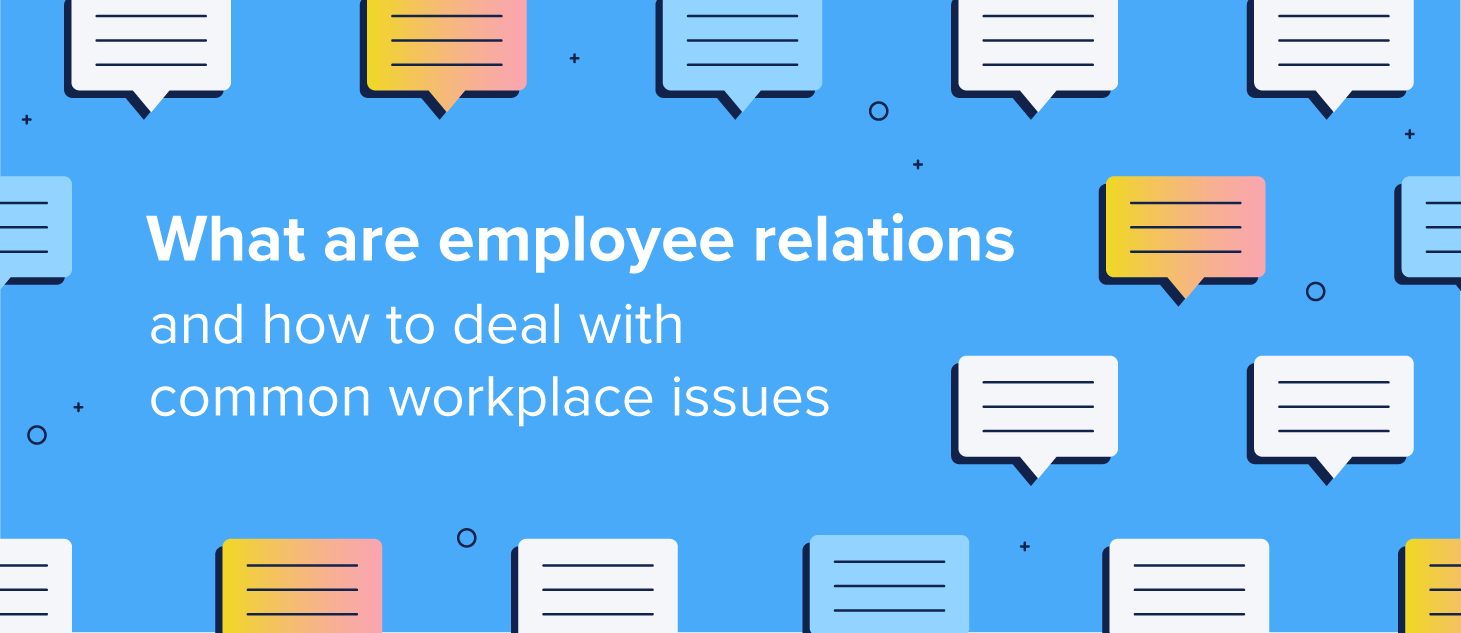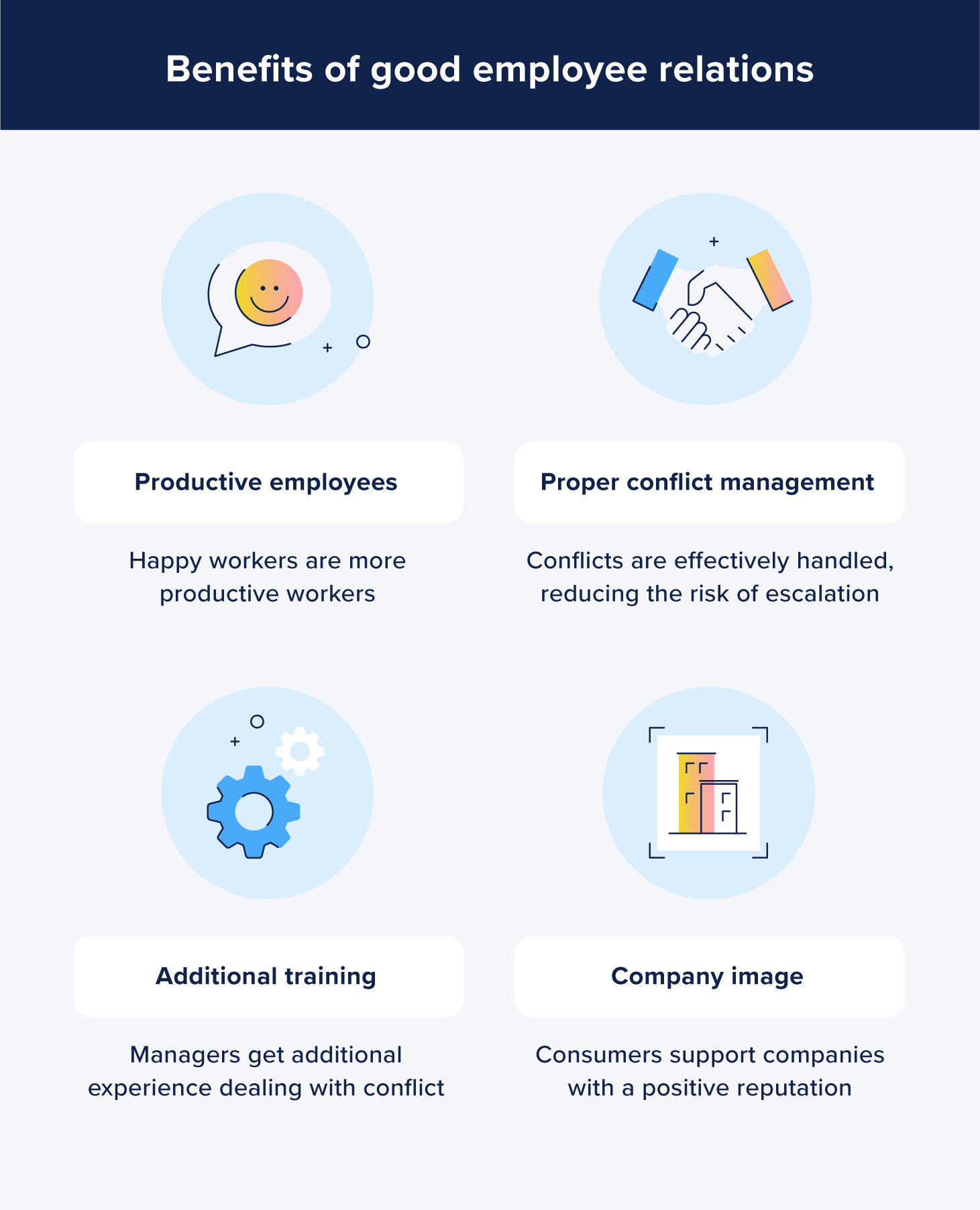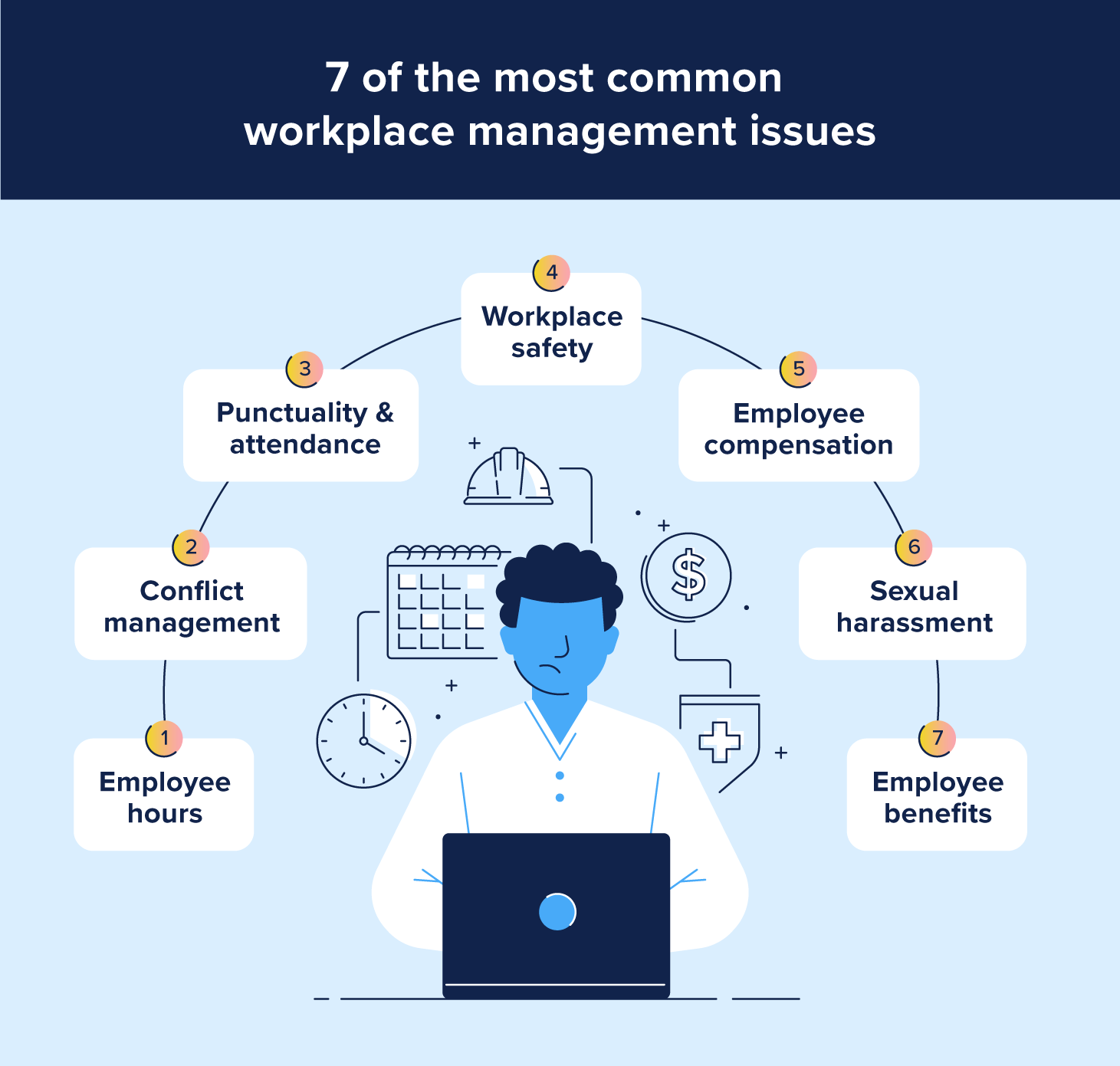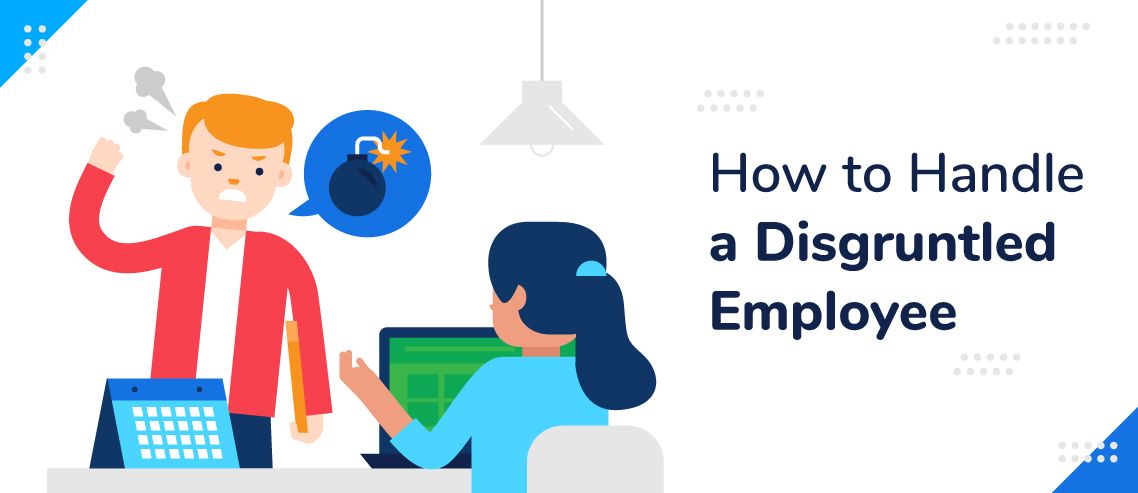What Are Employee Relations and How To Deal With Common Workplace Issues

Employee relations is arguably one of the most important factors in determining if a company will thrive, or merely survive.
For a business, its workers are the lifeblood of the organization — and how a business treats its employees and deals with employee relations issues will greatly determine the overall morale and productivity of its staff. In fact, a recent study conducted by the University of Oxford found that happy employees are 13% more productive than their unhappy counterparts.
Worker happiness is essential, and that is fairly easy to achieve when times are good. However, there are times when discipline or conflict resolution is needed in a workplace, and it is crucial for employers to handle these employee relations issues swiftly and fairly.
Below, we have highlighted common employee relations issues that a business will face. Through the help of full-service employee management tools and other strategies, learn how to handle these conflicts so your employees can stay happy, and your business productive.
What is employee relations?
Employee relations refer to any interaction between an employer and its employees. As we will highlight, this can include a host of workplace issues such as general conflict management, employee scheduling, and compensation.
The goal of employee relations is to resolve any situation that may come up in the most positive and productive way possible, whether that be conflicts between an employee and the business, or conflicts between two or more employees.
This is a crucial area for businesses to get right because how companies deal with employee relations directly influences the morale and productivity of their workers. A company that has good employee relations will have a workforce that feels respected and valued, while a company with poor employee relations will have a workforce that is disgruntled and unmotivated.
What are the benefits of good employee relations?
Having good employee relations practices can be a tremendous advantage for a company, resulting in a few clear benefits such as:
- Productive employees: Happy employees are proven to be more productive overall than their unhappy counterparts. Implementing and adhering to a strong employee relations system will ensure workers stay happy and productive in their positions.
- Proper conflict management: No matter the business, some form of conflict is inevitable whether that be between the business and an employee, or between two or more employees. Having a strong employee relations system ensures problems get dealt with quickly and effectively, reducing the risk of escalation.
- Additional training: When conflicts arise in a workplace, there is an opportunity for managers to step up and resolve the issue without involving higher-ups. Businesses that have strong employee relations systems empower their managers to gain valuable experience in conflict resolution that will help them throughout their careers with the company.
- Company image: Businesses that have a reputation for treating their employees fairly and with respect get advantages in the marketplace. Consumers like to support companies that have a positive image, while future job-seekers will be eager to apply to any open position in a company that values its workers.

7 of the most common employee relations issues
Now that we have defined employee relations issues, we will take a look at some of the most common that are found in the workplace. This isn’t an all-encompassing list, but being aware of these seven issues will give you a great starting point for future success.
1. Employee hours
Issues about employee hours can manifest in two ways.
First, employees can become disgruntled with the number of hours they are working. An overworked staff will experience a large dip in productivity and morale. This can often be caused by overscheduling productive employees or lacking adequate staff.
Additionally, you can run into disagreements about hours worked. Come paycheck time, employees may dispute the hours indicated on their paycheck, claiming they worked more than is shown or should be receiving overtime pay. Without a proper scheduling system in place, there aren’t many healthy ways to resolve this.
Potential solution: employee management tools
Enlisting the help of an all-in-one employee management tool like what we offer at ZoomShift will keep you on top of your scheduling and stop these issues before they start. With ZoomShift, you can easily schedule and track employee time, track PTO requests, and make payroll a breeze. This will result in accurate paychecks every time while avoiding scheduling conflicts in the process.

2. Conflict management
Whether it’s between an employee and the business, or two or more employees, conflict is inevitable in the workplace.
Between employees and the business, disputes can easily arise regarding time off, compensation, and workplace performance. Between two or more employees, conflicts can come about regarding work tasks, such as one person giving more effort than the other, or general interpersonal issues. It’s important for a business to deal with either of these situations as quickly as possible to keep tempers low and morale high.
Potential solution: have a dedicated conflict resolution system
Since conflicts in the workplace are so common, it’s smart for a business to have a system for dealing with these issues. Creating and distributing conflict resolution tactics in an employee handbook or similar is a good start to keeping workplace disagreements to a minimum.
Additionally, establishing an open and accepting workplace culture can help employees feel safe to talk about issues as soon as they are bothering them. This can lead to the resolution of conflicts before they build up and become a bigger problem. Implementing these changes can foster positive employee relationship management and help employers to build a great team of workers.
3. Punctuality and attendance
A common occurrence in a workplace, staff punctuality and attendance can easily turn into an employee relations issue.
One or more employees may start showing up late, or not show up to shifts entirely out of confusion. This can become a large problem for a business because late or missed shifts cause a loss of money and a decrease in employee morale. Staff members that have to continuously pick up slack for employees with attendance issues will become less productive doing the work of two people, and become overworked and resentful if the issue doesn’t get resolved promptly.
Potential solution: implement clear attendance policies
As with conflict management, establishing clear attendance policies in an employee handbook will help to cut down on attendance issues. Adding specific language for disciplinary actions in the event of multiple absences or late arrivals will send a clear message to employees regarding their expectations of punctuality. If the problem persists, disciplinary meetings should be held with the employee in question to review attendance policies, and create an action plan to prevent attendance issues in the future.
4. Compensation
Employees want to feel as if they are getting a fair wage, and if they think they aren’t getting paid enough, the situation can turn complicated if not dealt with properly.
To combat this, many companies institute policies that stop workers from discussing their pay with each other. This is often the wrong move and can cause considerable issues with employees. They are always checking their paychecks for accuracy, keeping tabs on who received the coveted promotion, and investigating who got a raise — and for how much.
Potential solution: salary transparency
To stop compensation issues before they start, implement a salary transparency culture within your organization. Educate employees as to what the salary range is in their current position and any future positions that they could be promoted to. By being transparent about salary ranges in your company (and staying true to those ranges), employees are less likely to feel underpaid and underappreciated. Instituting this practice will also go a long way in helping your employee retention.

5. Workplace safety
For a business, the safety of its employees should be a top priority.
Accidents can occur in any situation, but it’s important for a business to ensure proper safety standards in the workplace. If employees feel as though they are working in unsafe conditions, it will greatly affect morale and productivity — not to mention, a business is liable if a worker is injured on the job due to employer negligence.
Potential solution: perform periodical safety audits
Periodically, businesses should perform safety audits to make sure workplace conditions remain secure for employees. Taking the time to check for things such as warning signs and labels, fire extinguishers, and other safety measures will go a long way to promoting workplace safety. Additionally, making sure employees are not overworked or constantly fatigued during working hours can limit accidents due to employee negligence.
6. Employee Benefits
Another prevalent issue is disputes regarding employee benefits and annual leave.
For employees, there are opportunities for conflict if a worker tries to take advantage of the system. An employee could claim they took less vacation time than they actually did, or attempt to abuse company health care benefits. Additionally, employees can feel slighted or disappointed when they are denied the use of vacation days.
On the employer side, genuine conflicts can also arise when a business fails to keep track of employee vacation time correctly, giving employees less annual leave than they are entitled to. In either situation, lack of proper reporting is the main culprit for the conflict.
Potential solution: have a clear benefits policy — and keep track of it
The easiest way to resolve this type of employee relations issue is to have a clear benefits policy and accurately keep track of it. Include a benefits policy in an employee handbook so everyone is on the same page from the start. Throughout the year, accurately keep track of time off and other benefits to make sure annual leave is being used correctly.
Additionally, it could be beneficial to outline regulations when it comes to approving time off. If, for example, it is harder to grant an employee time off during a busy season, clearly state that within internal documents so there are no surprises for employees. Following these steps will lead to a happier workforce and a boost in employee morale.
7. Sexual harassment
The final employee relations issue on our list is sexual harassment in the workplace.
Unfortunately, sexual harassment is a common occurrence that can affect any employee whether they are entry-level or upper management. This type of harassment is particularly damaging because the victims can often be scared to speak up, or think they will be punished themselves for doing so. Sexual harassment in a workplace can easily turn into a major employee relations issue and contribute to a hostile and unsafe work environment.
Potential solution: enact a zero-tolerance sexual harassment policy
To resolve sexual harassment as best as possible, employers should institute and follow a zero-tolerance sexual harassment policy. This can send a clear message to employees that sexual harassment will not be tolerated in the workplace. Additionally, instituting a workplace culture that makes employees feel safe to speak out will go a long way in reducing — and hopefully stopping — any type of harassment.
For a business, employee morale is incredibly important for boosting productivity and maintaining a low turnover rate. An easy way to keep morale high is to value employee relations issues and know the best way of dealing with them fairly and effectively. So, be knowledgeable of our tips above, and enlist the help of an all-in-one employee management tool like we offer at ZoomShift to keep employee relations issues low, and productivity high.
JD enjoys teaching people how to use ZoomShift to save time spent on scheduling. He’s curious, likes learning new things everyday and playing the guitar (although it’s a work in progress).



